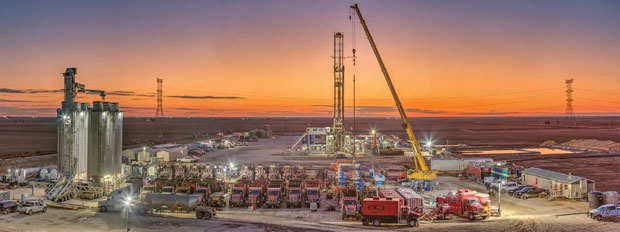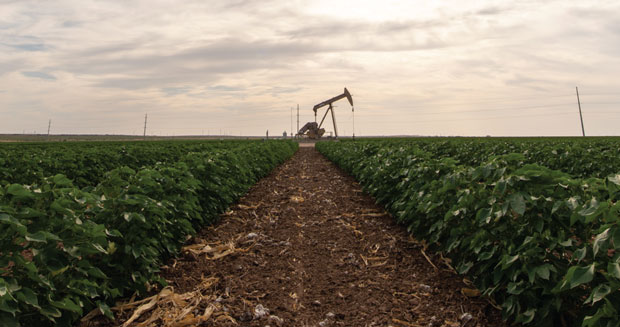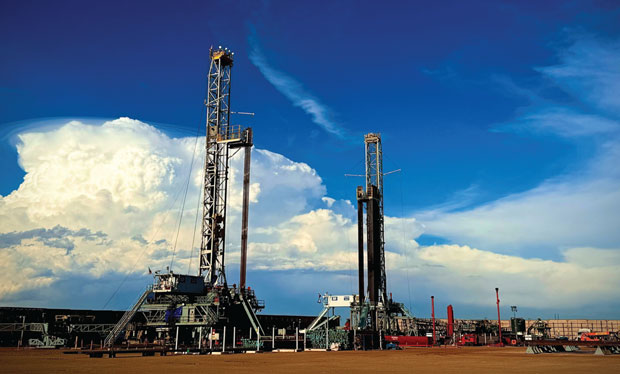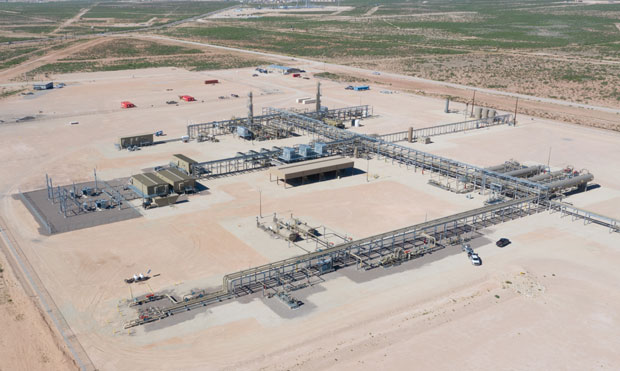
Operators Keep Eyes Open For Emerging Opportunities To Grow Permian Positions
As always, blockbuster Permian Basin deals are creating opportunities for far more than just the acquiring company. The repercussions of one of the largest—ExxonMobil’s acquisition of Pioneer Natural Resources—are generating plenty of industry buzz about trickle-down dealmaking and activity.
One constant in all oil and gas basins is that the engines of corporate M&A drive the gears of property A&D, for opportunistic operators of all sizes and even new startups that find proverbial treasure in the wake of large deals. Often as not, the first to recognize the upside potential are familiar names and faces seeking to return to proven properties and leverage time-tested operating strategies.
For example, Cutbow Operating is taking a unique path back to assets its management team knows well. President Keith Fritschen, a production and completion engineer with Parsley Energy until the company’s sale to Pioneer in 2021, says the company was approached about acting as contract operator of Midland Basin assets retained by the estates of Howard Parker and Joe Parsley, co-founders of Parker & Parsley Petroleum Company.
To connect the dots, Parker & Parsley merged with MESA in 1997 to form Pioneer. Parsley Energy was founded in 2008 by Bryan Sheffield, son of former Pioneer Chief Executive Officer Scott Sheffield and grandson of Joe Parsley. The company was started with a portfolio of wells that had been drilled by Joe Parsley in partnership with Parker. The bottom line: Cutbow Operating, a company managed by a former production and completions engineer at Parsley Energy, is now the contract operator of legacy assets associated with two men and a pedigree of companies whose names are synonymous with Midland Basin oil and gas.
How’s that for a uniquely Permian twist on a “back to the future” success story?
Looking For Opportunity
While Cutbow Operating is keeping an eye on what neighboring companies are doing on offset leases in the deeper Barnett and Woodford formations, Fritschen says the company’s primary focus is on the core benches in the Midland Basin. These include the Lower Spraberry, Wolfcamp A and B formations. He adds that the company also has drilled and completed in the Jo Mill formation with success.
In January, the company was in talks for a trade that could yield up to 30 additional drilling locations as it works to expand a 5,000-acre footprint, Fritschen reports.
With the vast majority of Permian acreage spoken for, and Cutbow’s size limiting its ability close a large corporate acquisition deal, avenues to continued growth include organic expansion and acquiring leases from larger operators divesting of noncore acreage, he adds.
“That is our strategy, and we will look at opportunities throughout the basin,” Fritschen says.
As contract operator, Cutbow Operating is keeping its primary focus on Spraberry, Wolfcamp A and B, and Jo Mill targets while also studying the potential of Barnett and Woodford shales in Midland Basin assets owned by the estates of Howard Parker and Joe Parsley, co-founders of Parker & Parsley Petroleum Company.
Fritschen and his team launched Cutbow after Parsley Energy’s sale to Pioneer three years ago. Parsley Energy was the previous operator of this lease position with 40-50 vertical wells that are now being operated by Cutbow. The team got busy in the first year evaluating drilling opportunities on assets chiefly in Martin County.
Cutbow faced immediate choices that included drilling new verticals, allowing some opportunities to lapse, or raise funds for new horizontal development. After securing the capital, the company is nearly finished drilling a package of 38 horizontal wells with laterals ranging from 1.5 to 3.0 miles on half-section developments with between three and six wells per pad.
Completion designs on the primary targets—the Spraberry and Wolfcamp A and B benches—are similar to those of other Permian players using 2,000-2,200 pounds of proppant per lateral foot and 47-50 barrels of fluid per lateral foot on reduced 150-foot stages with 10 cluster spacings, Fritschen notes.
Production has eclipsed 12,000 barrels of oil equivalent a day, up from 400 boe/d initially, he updates. Completion of the remaining eight-well project is expected to grow output to 18,000 boe/d, he estimates.
Long-Range Growth Plan
Hardly a newcomer to unconventional oil and gas success, tight oil giant pioneer Continental Resources continues to grow a 200,000 gross-acre Permian position after hanging its “open for business” sign in 2021 with the acquisition of the Delaware Basin assets of Pioneer Natural Resources. The move diversified Continental’s already oil-concentrated positions in the Williston, SCOOP/STACK and Powder River basins.
The right large acquisitions are still ideal, but Chris Nichols, vice president of Permian operations for the Oklahoma City company, says Continental is not overlooking any prudent growth avenues through original leasing, bolt-ons or trades. These strategies have allowed the company to grow a Midland Basin position next to the Central Basin Platform since it arrived in West Texas.
Continental Resources is running six rigs and two frac crews on its 200,000 gross-acre Permian lease position. After entering the Permian through a Delaware Basin acquisition in 2021, the company’s production is up to 80,000 boe/d as its embarks on a plan to invest up to $5 billion in the basin over the next five years.
“We are looking at deals all the time in the Permian,” he observes. “With recent bigger acquisitions in the basin overall, there may be a little bit of a slowdown in M&A in the near term, but through some of the portfolio churn in the industry, there will be additional opportunities. We want to grow in the Midland and Delaware basins, and we have been able to successfully execute deals with both big and small companies.”
Production is up to 80,000 boe/d as the company embarks on a plan to invest up to $5 billion in the basin over the next five years. Six rigs and two frac crews are busy as the company chiefly delineates its Delaware position deploying unconventional expertise honed from leading positions in North Dakota and Oklahoma.
“We have brought our Anadarko and Bakken expertise to the Permian Basin, and we have been able to combine it with the right people to create the same Continental culture that has made the company successful in our other basins for the last 56 years,” Nichols says.
The team has reduced drilling days and gained a better understanding of uphole challenges from pressurized disposal and “thief” zones. Several pilot wells and accompanying science are helping it formulate a long-term game plan, he says. With some limitations imposed by lease configurations, Continental is drilling two-mile laterals and plans to drill several three-mile horizontals across its position.
Although the Delaware focus is mostly on the Bone Spring and Wolfcamp A and B benches, the company also is testing the Barnett, which has a good gas-to-liquids ratio and tends to be oilier as it becomes shallower next to the platform, Nichols relates. The private company has not released figures on initial output from wells in the zone, which underlies portions of both sub-basins, but early results are encouraging on frac jobs using 2,200 pounds of sand and 50-60 barrels of slickwater per lateral foot.
“The Barnett is deeper and a little more challenging and we are working on costs, but we think it is going to be competitive in our overall portfolio,” Nichols comments.
Hitting The Ground Running
Growing with the right partners has been a mainstay of established Permian player Henry Resources, which continues to acquire working interest positions but sell operating rights after deciding to convert to a nonoperating company, says President David Bledsoe.
In December, Henry sold its operating interests on approximately 30,000 gross acres to Vital Energy and carved out 10%-15% of the value of all the properties as nonoperating working interests.
“Our goal is to become a sizable non-operator,” Bledsoe says. “We hit the ground running with a big position in nonoperated value and we plan to grow that value.”
In December, Henry Resources sold its operating interests and launched a new strategy to become a sizable Permian Basin nonoperator. As a nonoperator, Henry Resources will continue the late Jim Henry’s philosophy to treat every associated business—including operators and service providers—as partners.
Sometime in the next year or two, Henry says it will sell some of its operated working interest and retain a significant non-operated interest position in its last operated property, a Midland County section. This sell down will be done after drilling is complete on the 16-well property in February and stimulations finished in May. Acquirers may include Chevron, Vital or Oxbow, an independent start-up staffed with veterans from Henry Resources.
An ardent oil and gas industry player and supporter, company founder Jim Henry passed away last October. As Mr. Henry’s health worsened, company leaders reviewed with the Henry family the growing risks, liabilities and litigation associated with being an operator and recommended the change to protect the family’s interests, Bledsoe recalls.
Despite the change, a historic legacy remains. Being largely what Bledsoe describes as a “fast-follower” with technology, Henry Resources began using slickwater fracs in vertical wells in 2003 after eyeing George Mitchell’s work in the Fort Worth Basin Barnett Shale.
The company soon pioneered “Wolfberry” development, jointly developing the Spraberry and Wolfcamp benches below it with 10-12 stage fracs. The results led to a land rush that only accelerated with the ensuing introduction of horizontal drilling, which Henry Resources utilized for the first time in 2014.
As a nonoperator, Henry Resources will continue to treat every associated business—including operators and service providers—as partners, a philosophy adopted early on by Jim Henry, Bledsoe insists.
Henry Resources is retaining its engineering, geology and land staffs to continue to generate deals, he adds.
“Myself and several others at the company were born and raised here in Midland, and we have a lot of contacts, connections and deal-flow experience,” Bledsoe comments. “That is going to continue. It is one reason we want to pivot to a nonoperator. We still have all these skills and abilities and connections that make us a good partner of choice.”
Nonoperator Strategy
Relying on extensive oil and gas data and its in-house engineering expertise, Northern Oil & Gas is now investing as a nonoperating partner in large acquisitions that give the Minnesota company more say in asset development, says Chief Executive Officer Nicholas O’Grady.
“The larger joint venture transactions allow us to be involved in the development plan and in the capital decisions as partners, versus as a typical nonoperator with limited rights,” he explains. “We are still doing the same smaller ground-game deals and straight up traditional nonop transactions as well.”
In August, the company invested approximately $500 million to acquire along with operator Earthstone Energy—since bought by Permian Partners—the Delaware Basin assets of Novo Oil & Gas Holdings. That followed an earlier deal in which Northern paid $168 million in a joint acquisition with operator Vital Energy for Delaware Basin assets from Forge Energy II Delaware. Northern Oil & Gas has a 30% undivided stake in the Forge assets.
An earlier transaction in which Northern deployed $320 million in cash for a 39.96% working interest in Midland-Petro’s Mascot Project in the Midland Basin marked the beginning of the strategy for larger partnerships with additional development input, O’Grady recalls.
Northern Oil & Gas continues to make strategic investments as a nonoperating partner in large acquisitions. Partnering with Earthstone Energy—since bought by Permian Partners—Northern paid $50 million last August to acquire the Delaware Basin assets of Novo Oil & Gas Holdings. That followed an earlier deal in which Northern invested $168 million in a joint acquisition with operator Vital Energy to purchase Delaware Basin assets from Forge Energy II Delaware.
With varying interests in 47% of all Williston Basin wells ever drilled, publicly traded Northern Oil & Gas began seriously evaluating Permian properties in late 2018. Managed by what O’Grady calls “data science nerds” with a massive data set from the Williston, Northern spent nearly two years amassing and scouring information on the Permian’s tight oil pays and operators.
In late 2020, the company won its first bid, a nonoperated $1.5 million deal for 66 acres operated by EOG Resources. It now has 30 Permian partners and counting, and exited 2023 with net production close to 50,000 boe/d on 36,500 net acres.
Under any nonoperating scenario, the company manages its own interests with its engineering, land and accounting staffs. It needs only a joint interest bill and revenue check from operators, O’Grady notes.
Northern has spent close to $10 million in recent years to enhance its data collection and analysis capabilities to help it weigh positions and future deals.
Its engineering team utilizes artificial intelligence-powered proprietary software developed with Palantir Technologies to integrate all engineering and accounting systems, O’Grady says. Data includes live well performance measures, real-time drilling and completion information and costs, and artificial lift performance and type, among other measures.
The company can calculate and revise type curves and perform a plethora of functions to evaluate the effectiveness of wells and large acquisitions, including pre-drill and post-drill analysis across basins and the impacts of different completion methods and cost trends, O’Grady concludes.
Aggregator Of Choice
As larger players divest of legacy Permian assets for greener tight oil pastures, Ring Energy’s goal is to be the aggregator of choice on the Central Basin Platform and portions of the Northwest Shelf, says Chairman and Chief Executive Officer Paul McKinney.
Ring has amassed 82,694 net acres with more than 440 proved locations. The Houston company is producing more than 19,000 boe/d from horizontal San Andres wells in Texas’ Yoakum, Andrews and Gaines counties in the north and from stacked benches produced simultaneously with multistage fracs on vertical wells in Texas’ Crane and Ector counties in the south.
“We are looking at conventional reservoirs that historically used to be considered uneconomic, but that have become economical because of these new unconventional technologies,” McKinney says. “We believe there are other areas beyond the Central Basin Platform where we can apply these techniques.”
On Crane County properties from Ring’s 2022 acquisition of Stronghold Energy II, new verticals are being completed across a 1,500-1,800-foot column with six-seven zones in the San Andres, Grayburg, Clear Fork and other benches, McKinney explains. After plugs are removed, all zones are produced simultaneously instead of depleting one zone at a time.
Designs typically include eight perf clusters per 250-265-foot stage with six stages for five zones on its PJ Lea property and eight stages for six zones in the nearby McKnight Field.
The top PJ Lea well in 2023, the No. 4007M, posted a 30-day IP of 358 boe/d, 85% of which was oil. Over the past two years, the highest output from a recompletion topped 142 boe/d.
In August, the company acquired Founders Oil & Gas and its 3,600 acres in Ector County. Larger operators tried horizontal wells before, but zones could not be connected because of frac height limitations, McKinney details.
On the northern acreage, horizontal drilling and modern completion designs in the San Andres, the Permian’s historic workhorse, are yielding strong wells in a layer with higher porosity and permeability than shales and tighter rock in the rest of the Permian, he says. The top 2023 producer on the shelf, the Cowboy Joe No. 708 4XH, made 505 boe/d, including 84% oil, from a 7,041-foot lateral.
In the bench, the company is using 18-pound, cross-link gel, pumping 14-15 barrels per lateral foot on wells with 1.5-mile laterals, where possible.
Because of the geological history of the San Andres on the shelf, output from subsequent wells in a program actually can increase over time and be superior to production from an initial well, McKinney points out.
Midstream Infrastructure
Now a standalone enterprise after Occidental’s earlier acquisition of Anadarko Petroleum, Chief Executive Officer Michael Ure reports that Western Midstream is building natural gas processing plants, expanding crude treatment facilities and enhancing water midstream capabilities while achieving record throughput in each segment in the Delaware Basin.
Western’s Delaware Basin gas throughput eclipsed 1.6 billion cubic feet a day in the third quarter of 2023 and totaled 4.6 Bcf/d across WES’s entire asset portfolio. Despite industry concerns about takeaway as associated gas output surges with Permian crude production and the Biden administration’s sudden move to restrict the build-out of new liquefied natural gas export facilities, the company’s projects and others will get producers’ gas to market, he insists.
“Current pipeline infrastructure and expected projects will provide enough relief to allow for all of the volumes to flow out of the Permian as a whole,” Ure assesses.
Western Midstream is building natural gas processing plants, expanding crude treatment facilities and enhancing water midstream capabilities while achieving record throughput in each segment in the Delaware Basin. Western Midstream’s Delaware Basin gas throughput eclipsed 1.6 Bcf/d in the third quarter of 2023.
Its gas is shipped on intrabasin lines Agua Blanca, Red Bluff Express—in which Western has 30% ownership—and others to the WAHA Hub for access to the intrastate and interstate markets through multiple pipelines, Chief Commercial Officer Robert Bourne points out.
Altogether, the company operates 38 processing and treating facilities and more than 3,300 miles of pipeline in the western sub-basin. In addition to adding compression, 550 million cubic feet of daily processing capacity is being added through plants in Loving County, Tx.
“With gas gathering and processing, we have a good line of sight on the growth that we are going to need to accommodate,” Holderman remarks.
The company says it is gathering more than 220,000 bbl/d of liquids in the Delaware Basin as of the third quarter of 2023, with crude collected from the wellheads through an HVP gathering and treating system and more than 10 central transfer facilities that act as intermediate pump stations.
Oil flows to two regional oil treating facilities (ROTFs) designed to gather and separate oil at the facility rather than at well sites. Located in Reeves and Loving counties, the ROTFs are running at 70%-75% capacity providing treatment through as many as six, 39,000 bbl/d trains, in addition to oil cooling refrigeration in the summer months. Treated oil is delivered into the Plains All-American Pipeline.
Gathering more than 1.1 million bbl/d or flowback and produced water, the company continues to look at ways to store, treat and re-ship flowback across its position to reduce operator reliance on freshwater for hydraulic fracturing, Holderman says.
“We are focusing on making sure that we are being prudent and managing our disposal in a way that is sustainable,” Holderman relates. “Our well designs allow us to make sure that even interzone, we are able to control where we’re injecting to manage any potential seismic issues.”
For other great articles about exploration, drilling, completions and production, subscribe to The American Oil & Gas Reporter and bookmark www.aogr.com.











